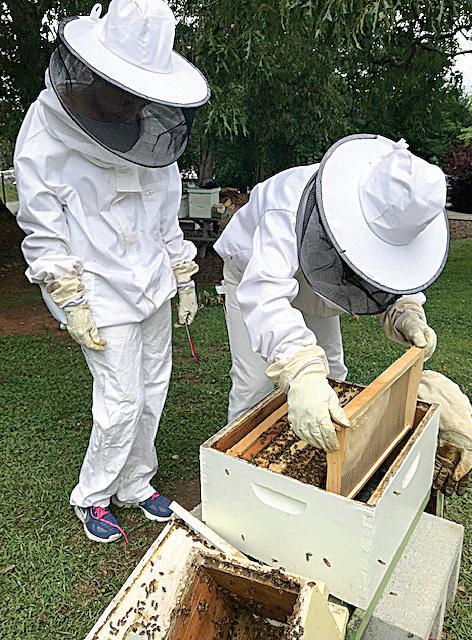September means it’s time to get ready for fall planting The Environmental Gardener Erica Glasener is the Community Involvement and Events Manager for the Piedmont Park Conservancy. She also serves on the advisory board for Trees Atlanta.
Summer is almost over. I don’t know about you, but I am still trying to keep up with the weeds in my garden. With all the rain we’ve had, it’s been a challenge. The good news is that there is still time. If we’re lucky we’ll get at least a few cooler days in September, perfect for weeding, cutting back and dividing perennials, preparing beds for new plants, starting seeds for fall vegetable crops and generally tidying up the garden. Tips for dividing perennials As a rule of thumb, divide perennials when they are not blooming. In the fall, divide them early enough during the season so that they will have four weeks to establish new roots before a hard frost. Whether you use a digging spade or fork or two shovels back-to-back, dig up a large
45 IVAN ALLEN JR BOULEVARD NW #2605 offered for $685,000 | JUST LISTED
clump with lots of roots and then divide the clump, making sure each section has plenty of roots and shoots. (For the best results use clean, sharp tools.) Minimize transplant shock by cutting the foliage back by 1/3 to 1/2 at the time you transplant. This will help compensate for root loss. Prepare the new planting area ahead of time so that roots of the divisions won’t dry out. Water new transplants immediately after
you plant them and then once a week until the ground freezes, if there is no rain. Apply two gallons of water for each one-gallon size perennial. Resume watering in early spring once every few weeks. Apply one to two inches of mulch around divisions after transplanting. Make a map, it can be a sketch, labeling the new plants you add to your garden or share with fellow gardeners. Some perennials should be divided by hand, not with a sharp spade or digging fork, but by digging up a large clump and then teasing apart the roots, making sure shoots are attached to each section. You can use two pitchforks back-to-back, or a pitchfork (or digging fork) and a spade to pull apart the root balls. Try this method with the following plants: Black-eyed Susans; Bluestar; Blue Indigo; Coralbells; Daylilies; Garden
Phlox; Irises. Do not divide ornamental grasses in the fall. Wait until early spring and divide them as soon as new growth begins to emerge. Plant cool-season vegetable seeds and seedlings Prepare the soil by adding organic soil amendments. Ideally, you want to mix them in to a depth of 12 inches but even 5 to 6 inches will make a difference. Plant your seeds a bit deeper than you would in the spring when soils are cooler. This way they shouldn’t dry out as quickly while they are germinating. Be sure to soak the soil after planting. Keep up with watering during the hot weather, watering once a week, making sure to saturate the soil. Crops to consider for fall: beets; broccoli;
1155 BRIARCLIFF PLACE NE offered for $925,000 | JUST LISTED
RodneyHinote REALTOR®
c: 404.786.9562 o: 404.480.HOME RODNEY@ANSLEYRE.COM RODNEYHINOTE.COM 952 PEACHTREE STREET. SUITE 100, ATLANTA, GA 30309 | 404.480.HOME | ANSLEYRE.COM Information believed accurate but not warranted. Equal Housing Opportunity. If you have an existing relationship with a Broker, this is not intended as a solicitation.
24 SEPTEMBER 2021 |
At l a n t a I n t o w n Pa p e r. c o m


















